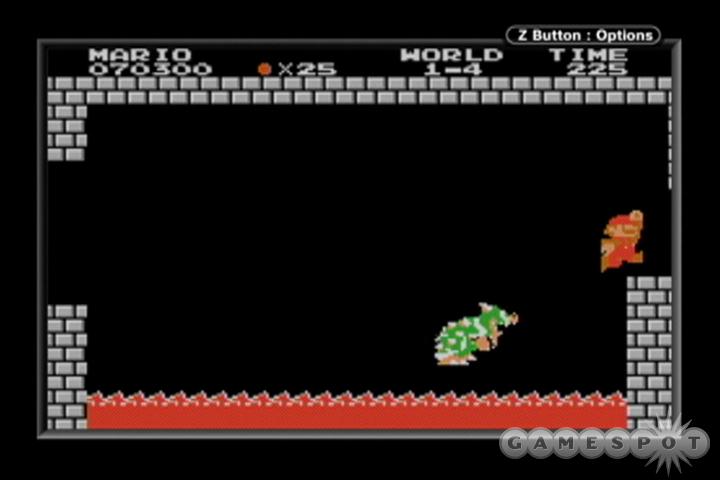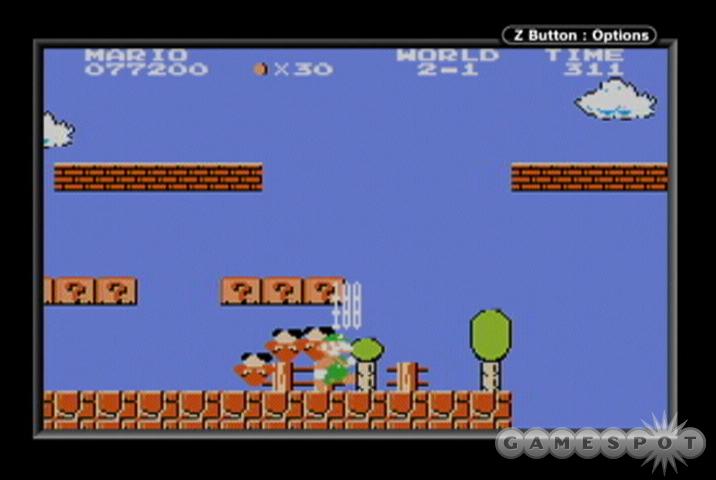Nineteen years ago, Nintendo revitalized a crashed-out home console market with the release of its first console, the Nintendo Entertainment System. The 8-bit machine debuted in 1985 and rode to mainstream success on the back of the world's most famous video game carpenter-turned-plumber, Mario. Released alongside the NES, Super Mario Bros. was a landmark event in the history of gaming. It got games off of one or two static screens and made the 2D, scrolling platformer the world's most popular genre. Now, in 2004, Nintendo is rereleasing some of the early games that helped make Nintendo a household word. Of course, Super Mario Bros. is there leading the pack. The classic platformer holds up pretty well after all this time, though some minor technical issues prevent this reissue from being as super as the original game.

Super Mario Bros. is a 64-level extravaganza that sends Mario up against Bowser, king of the koopas. As Mario, you'll stomp on the insidious turtle creatures, crush mushroom-like goombas beneath your feet, and absolutely crush bullet bills, buzzy beetles, and the like. You'll pick up fireflowers and gain the ability to shoot fireballs, which you'll use to burn up the Hammer brothers, spinys, piranha plants, and more. But mostly, you'll do a whole lot of running and jumping as you make your way through the game's eight worlds. The game's worlds are broken up into four levels each. The fourth level of each world is a castle level with a boss fight against the evil Bowser at the end. The boss fights are mostly identical, with you attempting to either blast your nemesis with fireballs or sneak past him to grab an axe, which causes the bridge Bowser's standing on to collapse.
Super Mario Bros. looked pretty fantastic when it originally hit in 1985. The game has aged fairly well, though there's some graphical weirdness in the Game Boy Advance version of the game that wasn't present in the original. Like all of the Classic NES Series games, parts of the game have been squeezed down to fit on the GBA screen, which is a slightly different aspect ratio than a television screen. In most games, this is only really noticeable when you look at on-screen text. Here, however, Mario looks really weird. He jiggles and jitters when he runs, and some of the sprites in the game look like they've been scrunched down a bit. Some still look OK, while others look really sloppy.
On an actual Game Boy Advance, the problems aren't as prevalent. But when you put the game into a Game Boy Player, the problems are magnified. Setting the GB Player's screen filter to soft helps a bit, but it's still noticeably worse than the original NES version.

The game's sound doesn't have any of those problems, and its transition from the NES to the GBA hasn't made any real impact on the quality of the sound or music. The Super Mario Bros. music is some of the most famous game music around, and the catchy tunes are still just as catchy now as they were in '85.
Overall, Super Mario Bros. could have been a real standout in the list of classic NES games rereleased for the Game Boy Advance. The game still plays well, and the concepts hold up just fine even after all this time, but the graphical problems the game has really prevent it from being a pixel-perfect port.